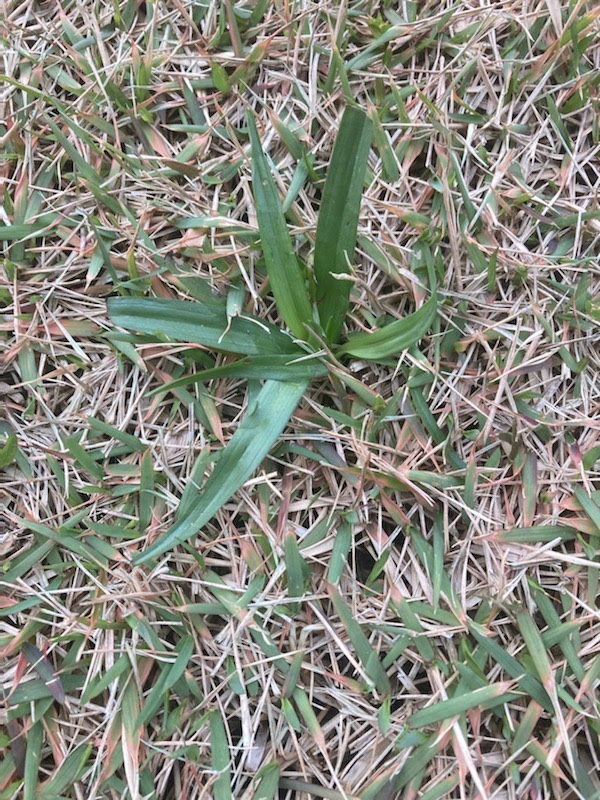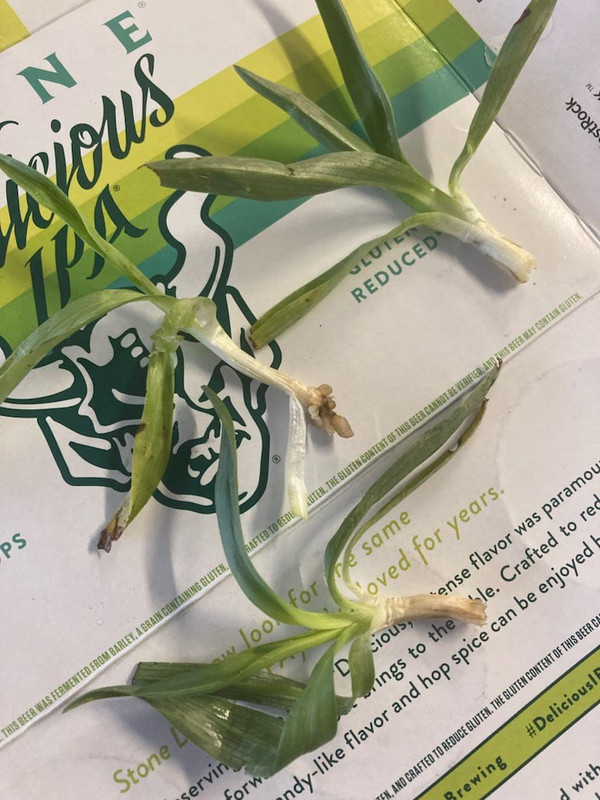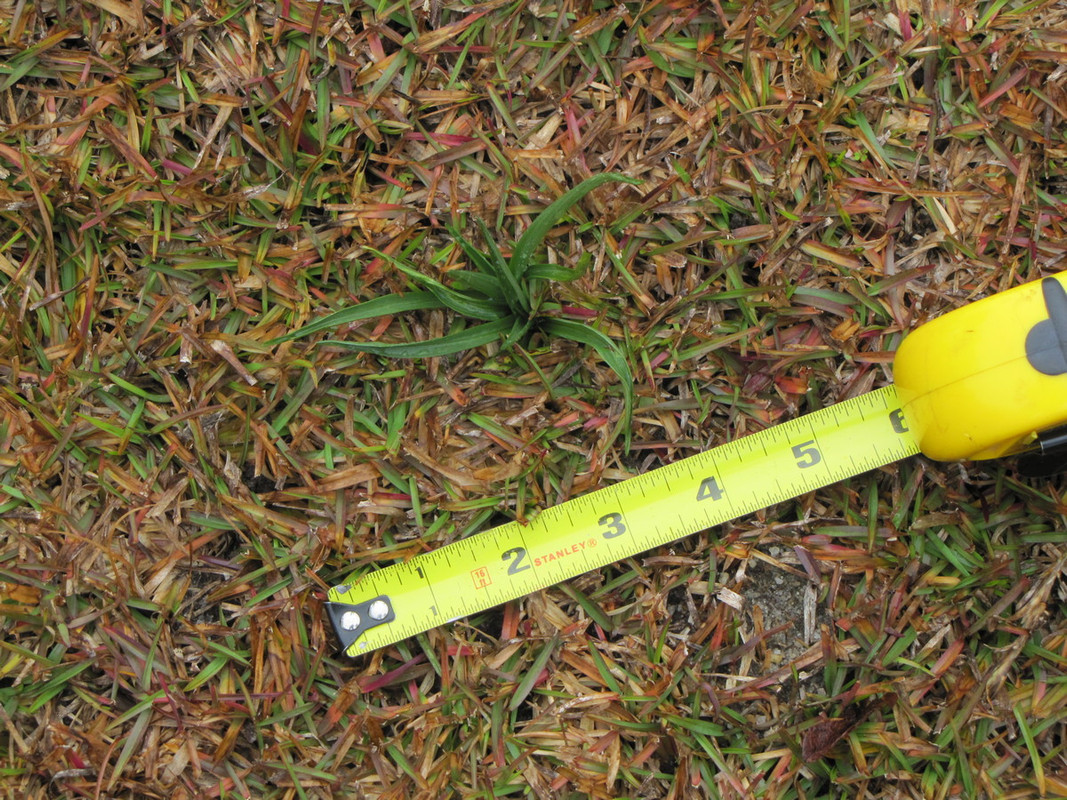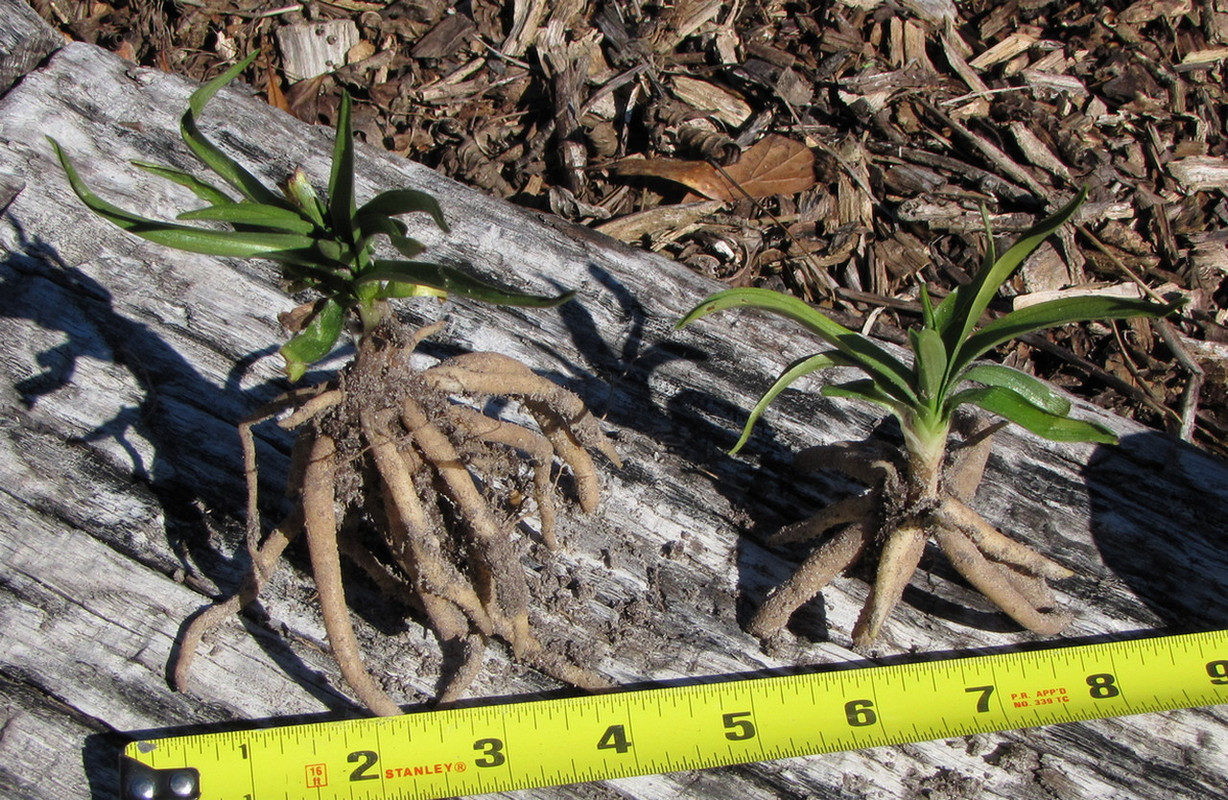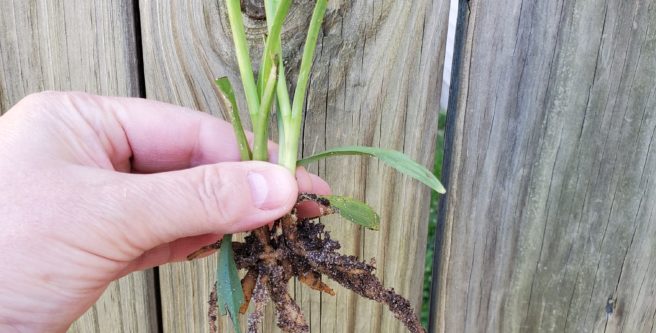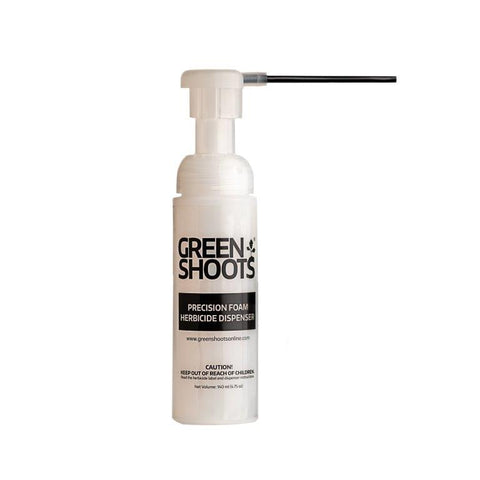Terrestrial native orchid? I am going to transplant several from my lawn to a different location to see what happens. Stay tuned.
Part 2. This is mostly a FYI! In one of my earlier post I said I have applied Round-up several times with zero effect. I am old, been around a long time, over the hill, nearing the bottom. When I referred to Round-up, that is Glyphosate 41%. That is what Round-up use to mean. Today it has become a "Brand Name". Anyway I applied at the rate 8 oz. gly. to 8 oz. water. 50-50 mix, app. spaced 5 days apart. No results.

In this pic look close and you can see a skinny, longer, light colored grass like plant. That is my MAGOR problem weed. Green Kyllinga. Never noticed it before late year before last. So early last year I set out to get ride of it. I bought

at great $$$$ expense. After everything greened up and started growing I did a blanket spray with Tenacity. It did knock it down for a short while. Next came a blanket spray with Dismiss. It too did knock it down for about two weeks I followed up with spot spray with Dismiss. By now it is above 90 degrees every day, which is the cutoff for Dismiss. It continues to reemerge. Now spot spraying with Certainty. It too knocked it down for a while. Next was Certainty with Sedgehammer mix. It is now late summer, still into the 90's but I did another spot wit Dismiss as it seemed to work the best. But with it still so hot it did burn some of my Centipede down. Have now added Celero to this years battle.
The reason I am telling all the above is....... look closely at the pic above with the Kyllinga. I had a couple of hard frost mid December and it sent the grass semi-dormant. Late December, early January the grass started to green up and even grow a little. The Kyllinga was coming out quite well and growing pretty good. I mixed up my 50-50 glyphosate and carefully applied a stream to all the Kyllinga and the mystery weed mid January. In the pic above you can see the Kyllinga may have died but the other weed is still green. And all that Kyllinga treatment through out the summer/fall did nothing to the mystery weed. The sedge control did nothing to the mystery weed.
As I said just a little info on what I have done. I do so hope my January attack on the Kyllinga has killed some of it!
